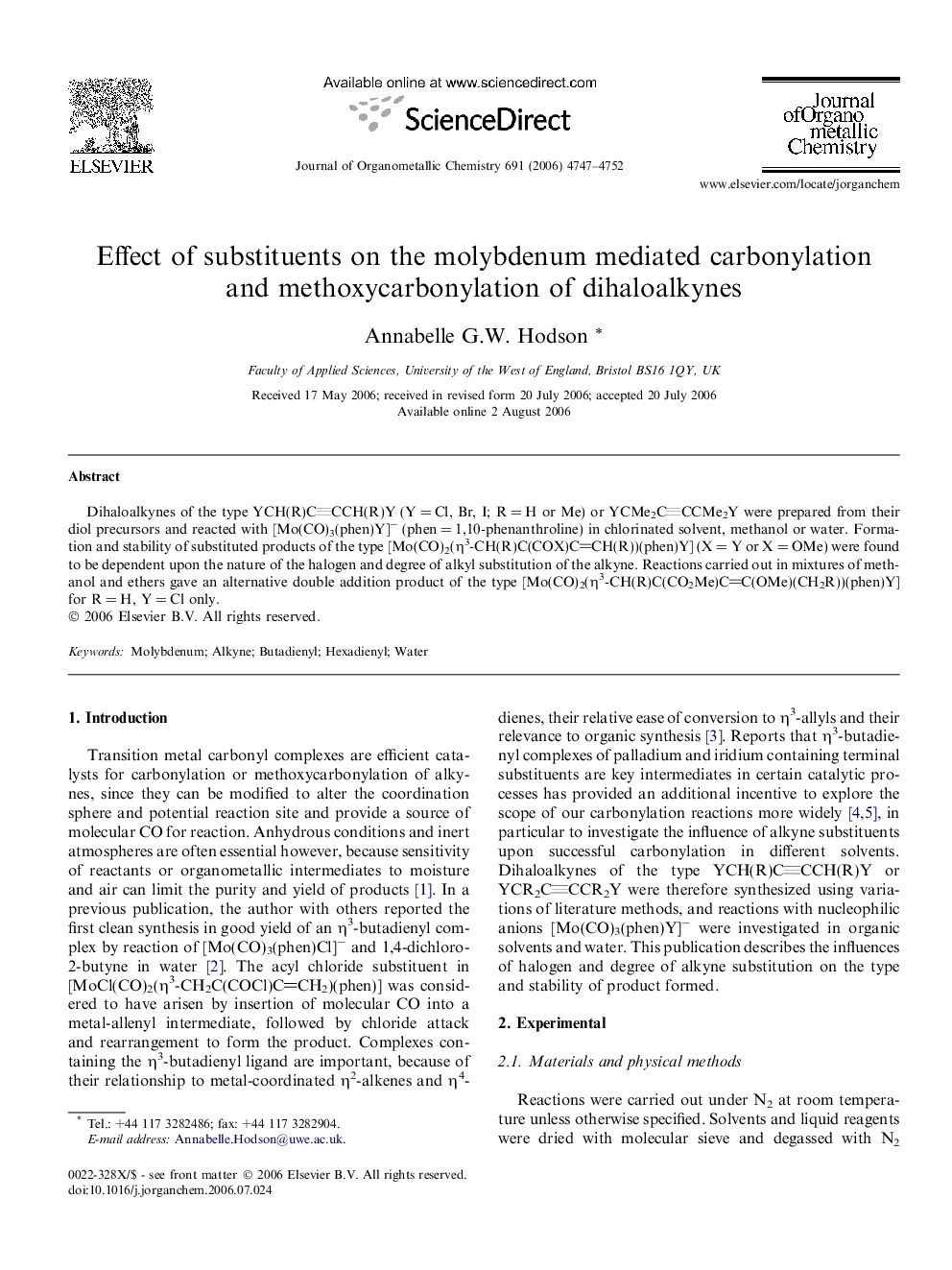| Article ID | Journal | Published Year | Pages | File Type |
|---|---|---|---|---|
| 1327436 | Journal of Organometallic Chemistry | 2006 | 6 Pages |
Dihaloalkynes of the type YCH(R)CCCH(R)Y (Y = Cl, Br, I; R = H or Me) or YCMe2CCCMe2Y were prepared from their diol precursors and reacted with [Mo(CO)3(phen)Y]− (phen = 1,10-phenanthroline) in chlorinated solvent, methanol or water. Formation and stability of substituted products of the type [Mo(CO)2(η3-CH(R)C(COX)CCH(R))(phen)Y] (X = Y or X = OMe) were found to be dependent upon the nature of the halogen and degree of alkyl substitution of the alkyne. Reactions carried out in mixtures of methanol and ethers gave an alternative double addition product of the type [Mo(CO)2(η3-CH(R)C(CO2Me)CC(OMe)(CH2R))(phen)Y] for R = H, Y = Cl only.
Graphical abstractNucleophilic attack of [Mo(CO)3(phen)Y]− on YCH(R)CCCH(R)Y or YCR2CCCR2Y (R = H or Me; Y = Cl, Br, I) yields carbonylation or methoxycarbonylation products containing a substituted η3-bonded butadienyl or hexadienyl unit. The type of halogen and degree of substitution of the alkyne control formation of this complex, [Mo(CO)3(phen)Y2] or η3-allyl [Mo(CO)2(η3-CH(R)C(CO2Me)C(OMe)(CH2R))(phen)Y].Figure optionsDownload full-size imageDownload as PowerPoint slide
